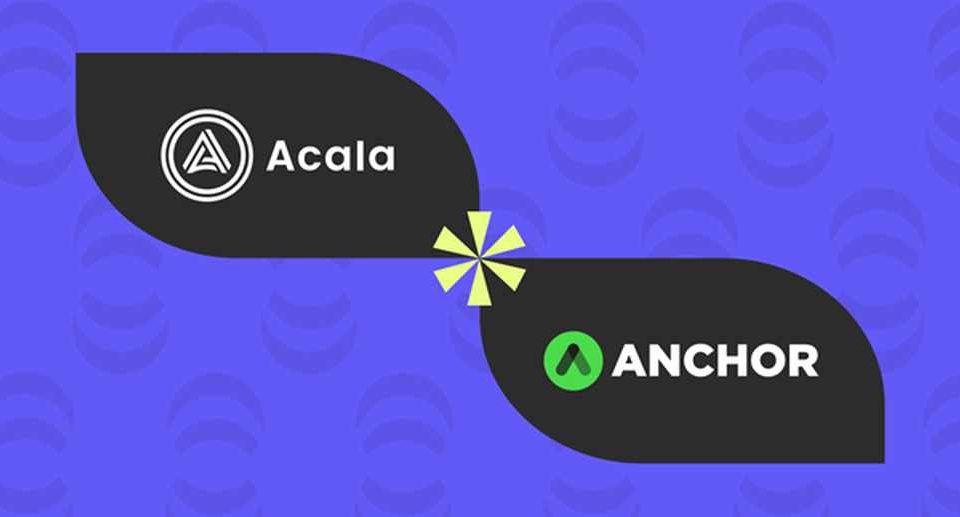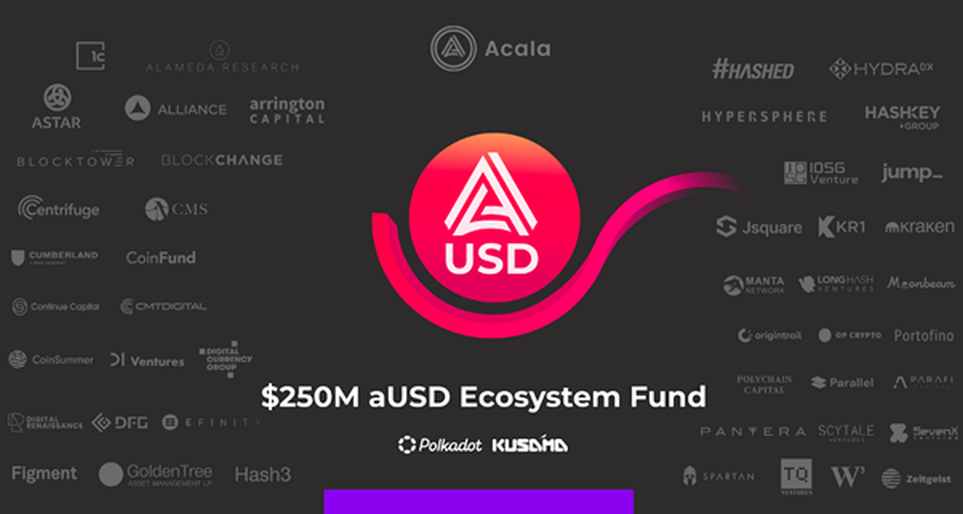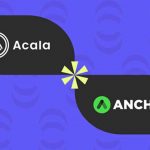Anchor Protocol, Acala join forces to unite Terra and Polkadot DeFi ecosystems and grow decentralized stablecoin market

The decentralized finance (DeFi) space has so much going on and it’s difficult to keep up with it all. Since its inception in August 2018, the DeFi market has continued to evolve and mature quite immensely over the last couple of years.
Fast forward four years later, we now have DeFi ecosystems that include decentralized exchanges (DEXs), decentralized financial services like lending, borrowing, staking, stablecoins, and many more. One of the leading startups powering this ecosystem is Acala, a decentralized finance network powering the aUSD ecosystem. The core product, Acala USD, is a decentralized, multi-collateral, crypto-backed stablecoin serving as the native stablecoin of the Polkadot ecosystem.
We covered Acala late last month after it joined forces with Karura to connect Polkadot and Kusama to connect Polkadot and Kusama to the Wormhole Multi-Chain Bridge. Since, the Acala team has been working behind the scene to evolve the DeFi ecosystems and grow the decentralized stablecoin market.
Today, Acala announced it is working with the team at Anchor, a savings and borrowing protocol built on the Terra blockchain, to grow the decentralized stablecoin space through a variety of integrations spanning the Terra and Polkadot ecosystems.
As part of the partnership, Acala and Anchor Protocol will work together to serve as gateways into Polkadot and Terra, bringing increased liquidity and yield opportunities for aUSD and UST. Acala and Karura, Acala’s Kusama-based parachain, will initially help expand Anchor’s collateral options for the UST stablecoin with Liquid DOT (LDOT) and Liquid KSM (LKSM), Acala’s yield-bearing liquid staking derivatives.
The teams will also work together to stand up deep liquidity pools for aUSD and UST on Acala, serving as a gateway into the Polkadot ecosystem for UST users. The two teams will continue to build more integrations and deployments in the Acala and Terra ecosystems, using these initial integrations as a foundation.
Terra UST – Decentralized, censorship-resistant money for the internet
UST is a decentralized, algorithmic stablecoin built on the Terra blockchain. UST yield on Anchor Protocol is stable, powered primarily by staking returns from multiple proof-of-stake assets that users provide as collateral. Anchor offers low-volatility yields on Terra stablecoin deposits by lending to borrowers who deposit PoS assets as collateral and enjoy access to liquidity services via UST.
Polkadot and Kusama users will soon be able to access Anchor yield using their LKSM and LDOT. This will be done by first transferring their liquid staking assets to Terra via Wormhole, then providing their LDOT or LKSM as collateral to borrow UST on Anchor. By doing so, the user then earns ANC incentives for borrowing and is able to deposit their UST on the Earn side to earn stable yield. With this new use case for LDOT and LKSM, a whole new group of users from Dotsama (Polkadot and Kusama) will be introduced to the Terra ecosystem.
aUSD – The native decentralized stablecoin of Polkadot and Kusama
aUSD uses over-collateralization and crypto-backing to maintain its peg. aUSD’s protocol mints a stable currency from a basket of reserve assets. This enables people to transact, trade, and facilitate services using aUSD without price volatility, and, if desired, while retaining ownership of their reserve assets like ACA, DOT, KAR, KSM, DOT and KSM derivatives, parachain assets, and assets bridged from other consensus networks like BTC, or ETH. Decentralized stablecoins will also be eligible reserve assets for aUSD as long as they are accepted by Gauntlet and pass a governance vote.
aUSD is native to the Polkadot and Kusama ecosystem, meaning it can be transferred cross-chain to any parachain or dApp in the ecosystem with zero trust or bridge risk. As the default trading and routing asset of the Polkadot ecosystem, aUSD will give UST users a gateway into the Polkadot ecosystem to leverage their UST or aUST for further yield opportunities.
Acala and Anchor intend to create UST/aUSD pools, initially on Acala, and then later expanding to multiple other parachains and L1s. The pools will significantly enhance the liquidity for aUSD and UST while enabling collaborative efforts to grow the decentralized stablecoin space together.
New Collateral Assets on Anchor: LDOT and LKSM
Anchor will soon be integrating LDOT and LKSM as collateral assets in its protocol.
While enjoying the returns on staked DOT (~14%) and staked KSM tokens (~20%), Acala and Karura users will be able to utilize their liquid staking assets via cross-chain collateralization to access additional yield on Anchor. The subsequent issuance of UST can be deposited into Anchor to earn the platform’s current APY (~19%), further increasing yield. In an example, a user could stake their KSM on Karura to earn 20% and receive their liquid LKSM token, then send their LKSM to Anchor, deposit into Anchor to borrow UST, and then deposit their UST in the Earn side for an additional yield.
In summary, the following collateralization options will be available to Acala and Karura users on Anchor:
- Liquid DOT (LDOT) as collateral on Anchor from Acala
- Liquid KSM (LKSM) as collateral on Anchor from Karura
Anchor and Acala – Timeline
The roadmap for the integrations will proceed as follows:
- LKSM proposal as collateral on Anchor
- Wormhole launches on Acala (Wormhole integration can be found )
- LDOT proposal for collateral on Anchor
- aUSD/UST pool on Acala (via the Tapio stableswap protocol)
- Additional integrations
$250M aUSD Ecosystem Fund

If you are a developer interested in building a project that drives yield or utility of the aUSD stablecoin, apply for funding from the $250 aUSD Ecosystem Fund.
Build on Acala
If you’re a team looking to build on Acala, integrate the aUSD stablecoin, or receive support from Acala Grants, please get in touch with our team to chat about how we can support you.
About Anchor
Anchor is a decentralized borrowing and savings protocol offering users UST loans and the low-volatile yield on stablecoin deposits. The Anchor savings rate is powered by a diversified stream of staking rewards from major proof-of-stake blockchains, which support its stability relative to the volatility of money market interest rates. The Anchor community believes that a reliable source of yield in Anchor has the opportunity to become the reference interest rate in crypto.
About Acala
Acala is a decentralized finance network powering the aUSD ecosystem. The core product, Acala USD, is a decentralized, multi-collateral, crypto-backed stablecoin serving as the native stablecoin of the Polkadot ecosystem. Acala’s Ethereum-compatible blockchain has built-in DeFi protocols for application developers to leverage, including a trustless staking derivative (liquid DOT — LDOT), a decentralized exchange, and the EVM+, a hybrid EVM offering a fully Ethereum-compatible development environment plus full compatibility with Substrate.




